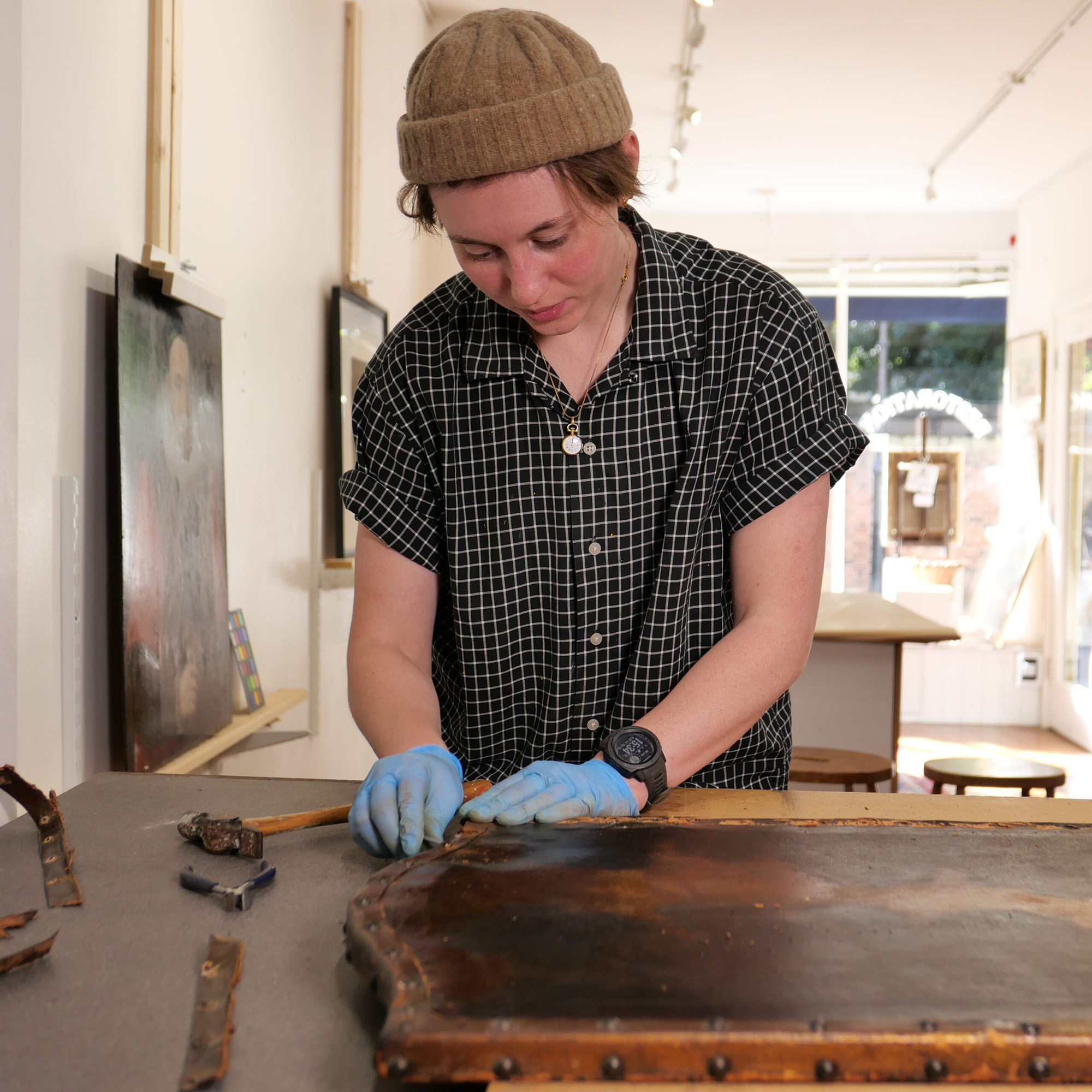This summer, we were thrilled to welcome Kari Mishler, a talented paintings conservation student from the prestigious Courtauld Institute of Art’s Conservation of Easel Paintings programme. Kari joins us with a rich background in Art History, having earned her degree in Art, more specifically in Art History, earning a Minors in Anthropology and Museum Studies from the Missouri State University. Kari has worked on various conservation projects, at the Kemper Museum of Contemporary Art and preserving historic properties through Americorps. Kari has also undertaken significant conservation work on paintings by David Morier and Ethel Walker and performed technical analyses on works by Claude Monet.
During her placement at Manley Restoration we focused on helping Kari further develop her skills in surface cleaning and paint consolidation. With her impressive expertise, Kari quickly become an instant asset to the team, contributing to our conservation work with enthusiasm and care.
While many of our projects must remain confidential, we’re excited to share a glimpse into one of the works Kari has helped conserve, a beautiful piece titled La Serra Majorca by 20th-century artist Hugh Cronyn. Below, we’ll walk you through the condition and treatment process, alongside some before, during, and after images that we trust you’ll find insightful:

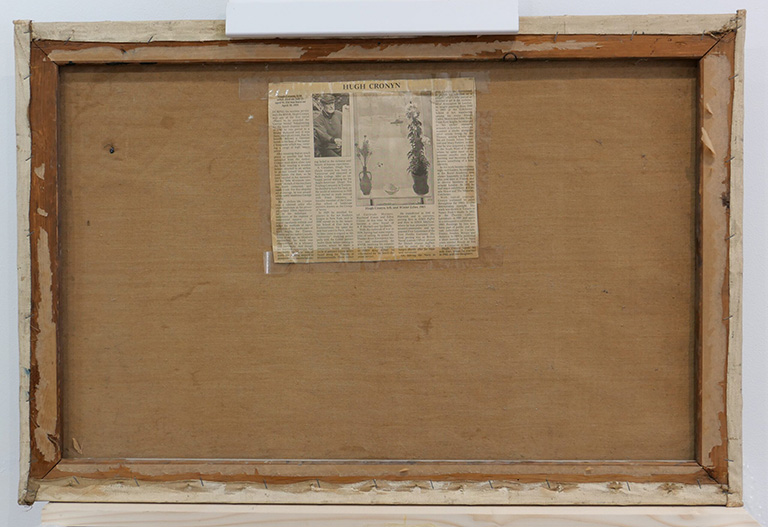
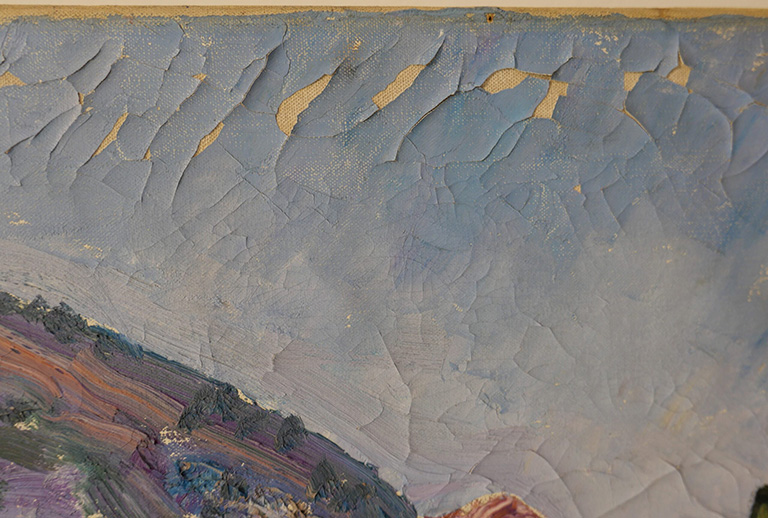
Condition Report: La Serra, Majorca
Artist: Hugh Cronyn
Date: 20th Century
Medium: Acrylic on Canvas
Support: The canvas is a plain weave, likely heavyweight cotton, stretched on a four-member stretcher. While mostly stable, some minor planar distortions are present. A newspaper article about the artist is taped to the reverse of the canvas.
Ground: The canvas was commercially sized and primed with white gesso.
Paint Layer: Most of the paint is in good condition, showcasing varied techniques, including visible brushstrokes and areas scraped with a palette knife. However, the sky has significant issues, with extensive cracking and denting. Paint has flaked off due to the failure of the size layer, and the ground is lifting from the canvas. Other areas of the painting show minor cracks but remain stable. Dust has accumulated, particularly in the impasto areas.
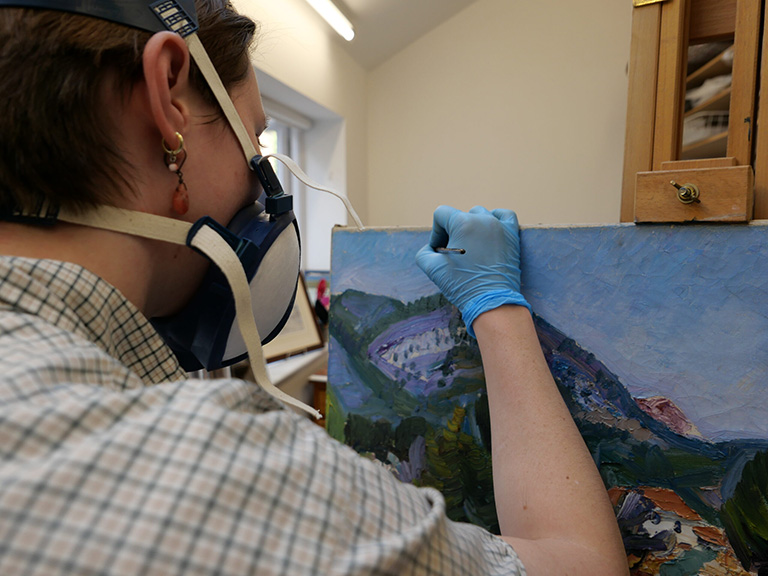
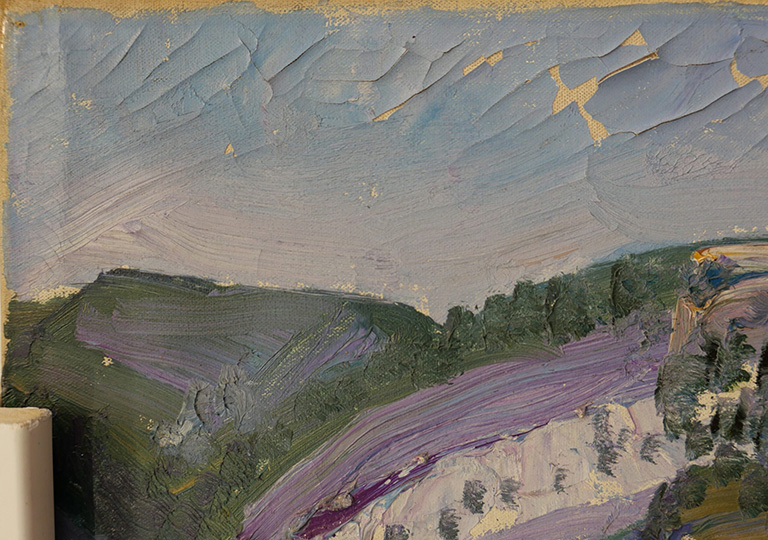

It has been a pleasure having Kari here and she should be incredibly proud of the progress she is making. As with all our interns, we will remain in touch with Kari and support her as she progresses her career in conservation.
We are deeply committed to our Placement Programme so stay tuned for more updates.


